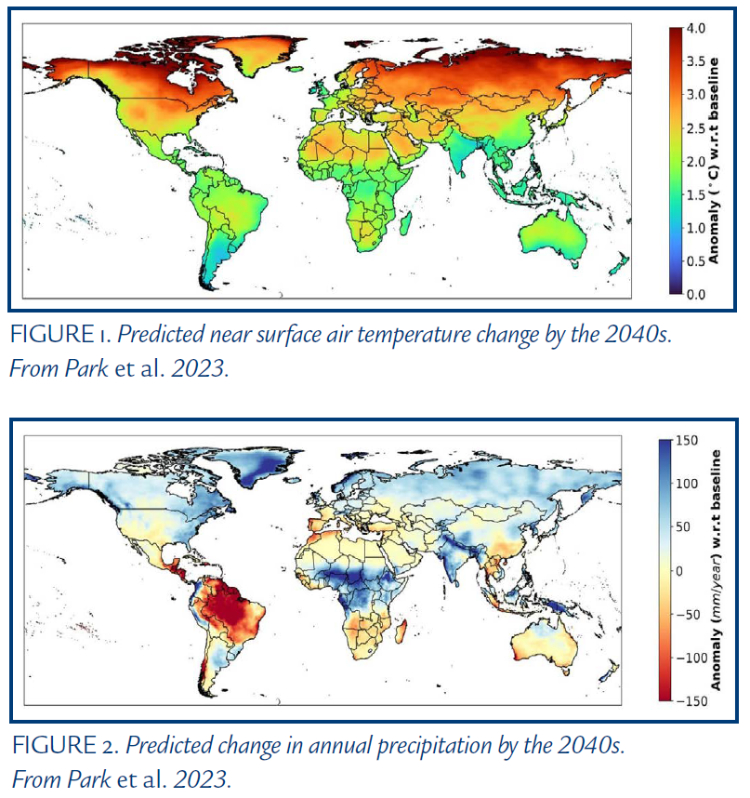Water — The Main Ingredient
At various points in my career, I have heard the argument that freshwater aquaculture makes more sen...

We’ve all heard the projections of how important the role of aquaculture will be to meet the needs of a growing population over the next several decades. But what kind of environmental conditions will future aquaculture producers have to operate under? A number of climate-related changes that impact our industry have already taken place and the trends show no sign of slowing or reversing. In fact, the term “the new abnormal” has emerged in recent months to describe weather-related events that would once have seemed unlikely.
The global average temperature for July of this year was confirmed to be the highest for any month ever. At least, since we began keeping records in the 1800s. Global average sea surface temperatures also reached record high levels in July, and marine “heatwaves” were apparent in Mediterranean and Caribbean waters. But temperature itself is just the tip of the iceberg (pun intended). Other, related, trends are equally ominous. According to the National Aeronautic and Space Administration (NASA), carbon dioxide levels in our atmosphere have increased from less than 320 ppm in 1960 to over 420 ppm today. The resulting ocean acidification is a consequence many of us have had to confront firsthand.
Similarly, atmospheric methane levels have increased from 1645 ppb in 1984 to 1912 ppb in 2022. That may not seem like a lot, but the amount of methane in the atmosphere has more than doubled over the past two centuries, and methane is a potent greenhouse gas. Fortunately atmospheric methane only persists for about a decade, but the CO2 we pump into the atmosphere will remain for centuries.
The oceans’ 5-year average gain in heat content is now approximately 350 zettajoules, up from a baseline of 0 in 1957, and the past 30 years have seen global sea level rise by almost 10 cm. These factors combine to greatly increase the impacts of typhoons, hurricanes and tropical storms on coastal (and occasionally inland) aquaculture facilities, especially in the tropics and sub-tropics.
Warmer temperatures and changing precipitation patterns have contributed to recent catastrophic wildfires in many locations, including Hawaii, Canada, Portugal, northern Europe and even Siberia. Drought conditions, both temporary and prolonged, appear to be more common occurrences than they were in the past. The term “flash drought” is now used to describe conditions that arise very quickly as a result of the combined effects of extreme heat and lack of rainfall. “Flash drought” conditions have been implicated in devastating fires on several continents in recent years.
Longer-term changes in precipitation patterns have caused prolonged droughts in several regions, such that many reservoirs and lakes have literally dried up. On the other hand, flooding of unusual severity has occurred in many parts of the world over the past year including China, Korea, Japan, northern India, Pakistan, Norway, Germany, Slovenia, Russia, and various locations in the US. Apart from monsoon events and tropical storms, inland flash flooding events are becoming more frequent. Around the world it is not uncommon to hear reports of people receiving weeks’ worth of rain in a matter of hours or days.
A group of researchers from NASA, California State University, the Bay Area Environmental Research Institute and the Climate Analytics Group has published a study that may help answer the question I posed above (Park et al. 2023). Most climate models suggest that after global temperatures reach a threshold of 2o C above pre-industrial levels, a cascading series of climate changes may be irreversible, and most models suggest we will reach that threshold at some time in the 2040s. According to the study results, aquaculture producers will have to deal with near-surface air temperatures (over land) between 2.3o and 2.8o C higher than present-day values on average, with the most extreme increases (up to 4o C) occurring at northerly latitudes. Heat stress on human health is expected to increase across the entire planet, with the greatest increases occurring in South America, Central Africa, Canada and Russia.
The study suggests that changes in precipitation will be quite variable by region, but almost every important aquaculture production region will be affected. Northern latitudes, sub-Saharan Africa and northern India will experience more rainfall than they currently do, while large portions of South and Central America will see significant reductions. Changes in precipitation are also predicted to alter the types and intensity of solar radiation, and weather conditions conducive to wildfires are especially predicted to increase in the Americas, Europe, and southern Africa.
Last year, Pakistan’s Prime Minister, Shehbaz Sharif, addressed the United Nations General Assembly with this message: “The entire definition of national security has changed today. And unless the leaders of the world come together to act, and act now on an agreed common agenda, there will be no earth to fight wars over. Nature will be fighting back. And for that, humanity is no match at all.”
Aquaculturists have always been proactive in terms of minimizing our impact on the environment. However, it may be time to start considering how the “new abnormal” environment will impact us. Climate change can be anticipated to affect all aquaculture producers, large and small, in the coming decades. On every level, from private farmers’ business plans to entire countries’ aquaculture development strategies, the trends are clear and we must take them into account as we look to the future.
— C. Greg Lutz, Editor-in-Chief
Park, T., H. Hashimoto, W. Wang, B. Thrasher, A.R. Michaelis, T. Lee, I.G. Brosnan and R.R. Nemani. 2023. What does global land climate look like at 2°C warming? Earth’s Future, 11, e2022EF003330. https://doi.org/10.1029/2022EF003330